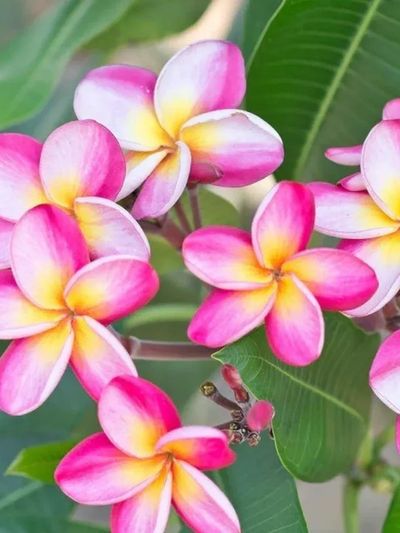Plumeria

Light needs
- Locate your plumeria in a spot that provides 6-8 hours of sun a day, with some shade from the afternoon sun if necessary
Watering
- When your plumeria first leafs out during the spring, it will require regular watering
- When blooming, your plumeria will require frequent watering, as blooms lose more moisture to the atmosphere than the leaves do
- Allow the top few inches of the soil to dry, but do not let the soil dry to the bottom of the pot while actively growing
Repotting
- Plumerias are best grown in pots in Texas as they require protection during the winter
- Provide well-drained potting soil
- Plumeria's root structure is proportionally small for the size of the plant, therefore, repotting should only be done when the plants have filled their pots with roots
Fertilizing
- Plumeria are heavy feeders during the growing season and will prefer a fertilizer higher in phosphorus to continuously bloom (this is the second number displayed on fertilizer bags/bottles #-#-#)
Overwintering
- As day length shortens and temperatures drop, your plumeria will begin to drop its leaves and enter dormancy
- Once they have dropped their leaves, and temperatures commonly fall below 40ºF, it is time to bring your plumeria in for the winter.
- If space is an issue, plants may be uprooted and soil shaken from the roots to be stored inside for the winter. Simply pot them up again in the spring, water them in, and when new leaves begin to grow you can begin watering regularly again
This website uses cookies.
We use cookies to analyze website traffic and optimize your website experience. By accepting our use of cookies, your data will be aggregated with all other user data.

